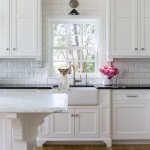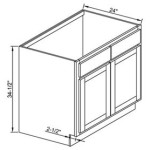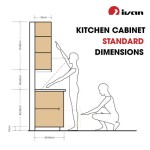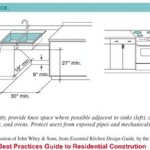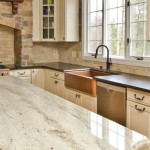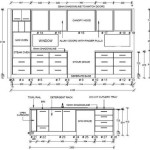What Is The Best Paint For Kitchen Cupboards?
Selecting the optimal paint for kitchen cupboards requires careful consideration of several factors, including the desired finish, durability requirements, application method, and budget constraints. The kitchen environment presents unique challenges to painted surfaces, necessitating a product capable of withstanding moisture, grease, and frequent cleaning. This article aims to provide a comprehensive overview of the various paint types suitable for kitchen cupboards, highlighting their respective advantages and disadvantages to facilitate an informed decision-making process.
The ideal paint for kitchen cupboards will exhibit excellent adhesion to the existing surface, be it wood, laminate, or metal. Proper surface preparation is paramount, regardless of the paint selected, to ensure optimal adhesion and a flawless final appearance. This typically involves cleaning, sanding, and priming the cupboards before applying the chosen paint.
Furthermore, the chosen paint should be durable and resistant to chipping, scratching, and fading. Kitchen cupboards endure frequent handling and exposure to various substances, making durability a critical attribute. The finish should also be easy to clean and resistant to staining, simplifying maintenance and preserving the aesthetic appeal of the cupboards over time.
Understanding Paint Types: A Comparative Analysis
Several paint types are commonly used for kitchen cupboards, each possessing distinct characteristics that make them more or less suitable for the application. These include alkyd paints, latex paints, acrylic paints, and specialty cabinet paints. Understanding the nuances of each type is essential for selecting the most appropriate option.
Alkyd Paints: Alkyd paints, also known as oil-based paints, are renowned for their exceptional durability and smooth, hard finish. They offer superior resistance to scratches, stains, and chipping, making them a robust choice for high-traffic areas like the kitchen. Alkyd paints also exhibit excellent leveling properties; brush strokes tend to self-level during drying, resulting in a professional-looking finish. However, alkyd paints have several drawbacks. They emit strong fumes during application and drying, necessitating adequate ventilation. They also require mineral spirits or paint thinner for cleanup, adding to the complexity of the process. Drying time is considerably longer compared to latex or acrylic paints, potentially extending the project duration. Furthermore, alkyd paints tend to yellow over time, especially in areas with limited natural light.
Latex Paints: Latex paints are water-based and offer several advantages over alkyd paints. They emit significantly fewer fumes, making them a more environmentally friendly and user-friendly option. Cleanup is simple, requiring only soap and water. Latex paints also dry much faster than alkyd paints, shortening the project timeline. Modern latex paints offer improved durability compared to earlier formulations, making them a viable option for kitchen cupboards. However, they may not be as resistant to scratches and stains as alkyd paints. Proper surface preparation, including priming, is crucial to ensure adequate adhesion and a durable finish. Latex paints are generally more flexible than alkyd paints, which can be advantageous in environments where temperature and humidity fluctuations are common.
Acrylic Paints: Acrylic paints are also water-based but offer enhanced properties compared to standard latex paints. They exhibit superior adhesion, durability, and color retention. Acrylic paints are more resistant to fading and cracking, making them a long-lasting choice for kitchen cupboards. They also offer excellent resistance to moisture and mildew, an important consideration in the humid kitchen environment. Acrylic paints are available in a wide range of sheens, allowing for customization of the final appearance. They tend to be slightly more expensive than latex paints but offer a worthwhile trade-off in terms of performance and longevity. The enhanced properties of acrylic paints make them a favored choice among professional painters for kitchen cabinet projects.
Specialty Cabinet Paints: Specialty cabinet paints are specifically formulated for use on kitchen cabinets and other cabinetry. These paints often incorporate a combination of alkyd and acrylic resins to achieve optimal performance. They offer excellent adhesion to various surfaces, including wood, laminate, and melamine. Specialty cabinet paints are engineered to provide a smooth, durable, and easy-to-clean finish. They typically exhibit superior scratch resistance and stain resistance compared to standard latex or acrylic paints. While often more expensive than other paint types, specialty cabinet paints can deliver professional-grade results and are designed to withstand the rigors of daily use in the kitchen environment. Some specialty cabinet paints are self-priming, further simplifying the preparation process and saving time.
Key Considerations for Choosing the Right Paint
Beyond the basic paint type, several other factors influence the suitability of a particular paint for kitchen cupboards. These include the type of material the cupboards are made of, the desired sheen level, the application method, and the overall aesthetic goals.
Material Compatibility: The type of material the cupboards are made of significantly impacts the choice of paint. Wood cupboards can generally be painted with any of the paint types mentioned above, provided proper surface preparation is performed. Laminate or melamine cupboards require specialized primers and paints that are designed to adhere to these slick, non-porous surfaces. Metal cupboards may require rust-inhibiting primers and paints to prevent corrosion. Failure to select a paint compatible with the cupboard material can result in poor adhesion, peeling, and a compromised finish.
Sheen Level: The sheen level of the paint affects both the appearance and the durability of the finish. Higher sheen levels, such as semi-gloss or gloss, are more durable and easier to clean, making them well-suited for kitchen cupboards. They also reflect more light, creating a brighter and more visually appealing space. However, higher sheen levels tend to accentuate imperfections in the surface, requiring meticulous surface preparation. Lower sheen levels, such as matte or eggshell, offer a softer, more subtle appearance but are less durable and more difficult to clean. A satin or semi-matte finish provides a good balance between durability and aesthetics, making it a popular choice for kitchen cupboards.
Application Method: The application method influences the choice of paint and the tools required. Brushing, rolling, and spraying are the common methods used for painting kitchen cupboards. Brushing is suitable for smaller projects or intricate details but can leave brush strokes if not performed carefully. Rolling is a faster method for covering larger surfaces but may not be ideal for detailed areas. Spraying provides the smoothest and most even finish but requires specialized equipment and proper ventilation. Airless sprayers and HVLP (High Volume Low Pressure) sprayers are commonly used for painting kitchen cabinets. The chosen paint should be compatible with the selected application method to ensure optimal results.
Surface Preparation: Laying the Foundation for Success
Regardless of the paint type chosen, proper surface preparation is the cornerstone of a successful kitchen cupboard painting project. Adequate preparation ensures optimal adhesion, a smooth finish, and long-lasting durability. The preparation process typically involves cleaning, sanding, and priming the cupboards.
Cleaning: Thoroughly cleaning the cupboards is essential to remove grease, dirt, and other contaminants that can interfere with paint adhesion. A degreasing cleaner specifically designed for kitchens should be used to remove stubborn grease deposits. After cleaning, the cupboards should be rinsed with clean water and allowed to dry completely.
Sanding: Sanding the cupboards creates a slightly roughened surface that promotes paint adhesion. Using a medium-grit sandpaper (e.g., 120-grit) is typically sufficient for creating a suitable surface. Avoid using coarse-grit sandpaper, as it can damage the cupboard surface. Sand the cupboards lightly and evenly, paying particular attention to edges and corners. After sanding, remove all sanding dust with a tack cloth or a vacuum cleaner.
Priming: Priming the cupboards provides a uniform surface for the paint to adhere to and helps to block stains and prevent bleed-through. Choose a primer that is compatible with the chosen paint type and the cupboard material. Oil-based primers are generally recommended for wood cupboards, while specialized primers are available for laminate and melamine cupboards. Apply the primer in thin, even coats, following the manufacturer's instructions. Allow the primer to dry completely before applying the paint.
By carefully considering these factors and selecting the appropriate paint and preparation methods, homeowners can achieve a professional-looking and durable finish on their kitchen cupboards, enhancing the overall aesthetic appeal and functionality of their kitchen space.

Best Paint For Your Next Cabinet Project The Home Depot

Best Paint For Your Next Cabinet Project The Home Depot

The Best Paint For Kitchen Cupboards Owatrol Usa

Interior Designers Share Best Kitchen Cabinet Paint Colours To Update Tired Designs Express Co

Best Paint For Kitchen Cabinets Solved Bob Vila

How To Paint Kitchen Cabinets

The Best Paint For Kitchen Cabinets 8 Cabinet Transformations

How To Paint Kitchen Cabinets In 7 Simple Steps

Choosing The Best Paint Colors For A Kitchen With Dark Cabinets Five Star Painting

How To Choose Kitchen Cabinet Paint Colors
Related Posts

